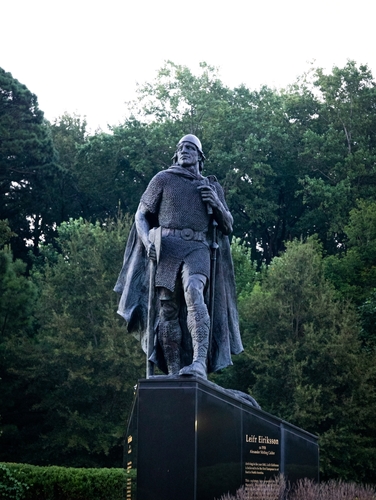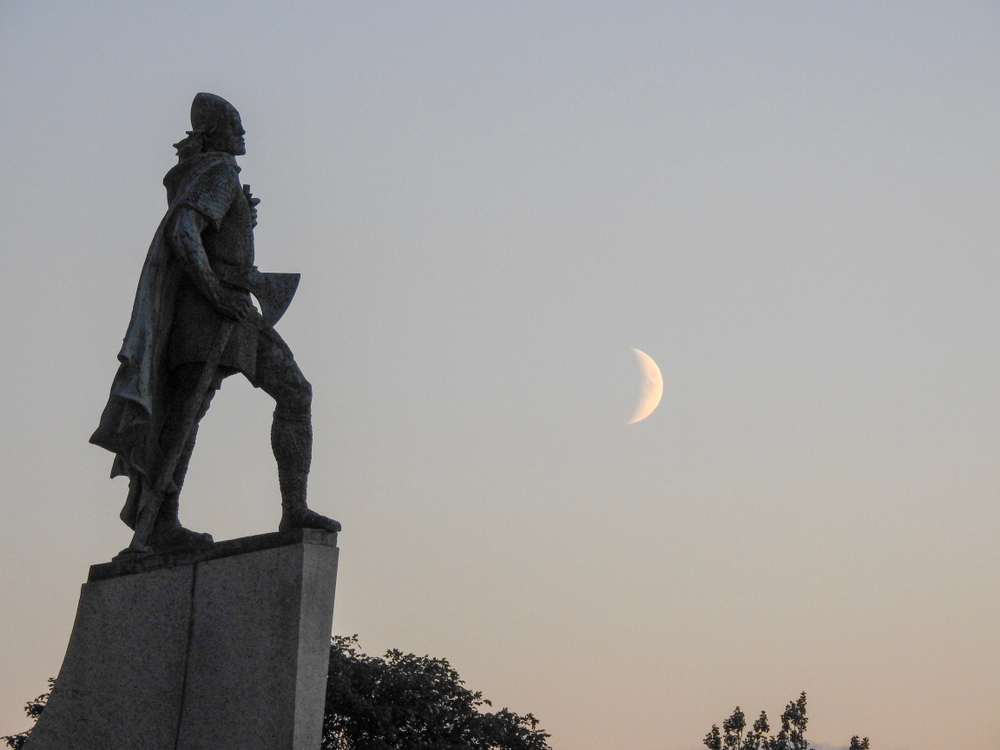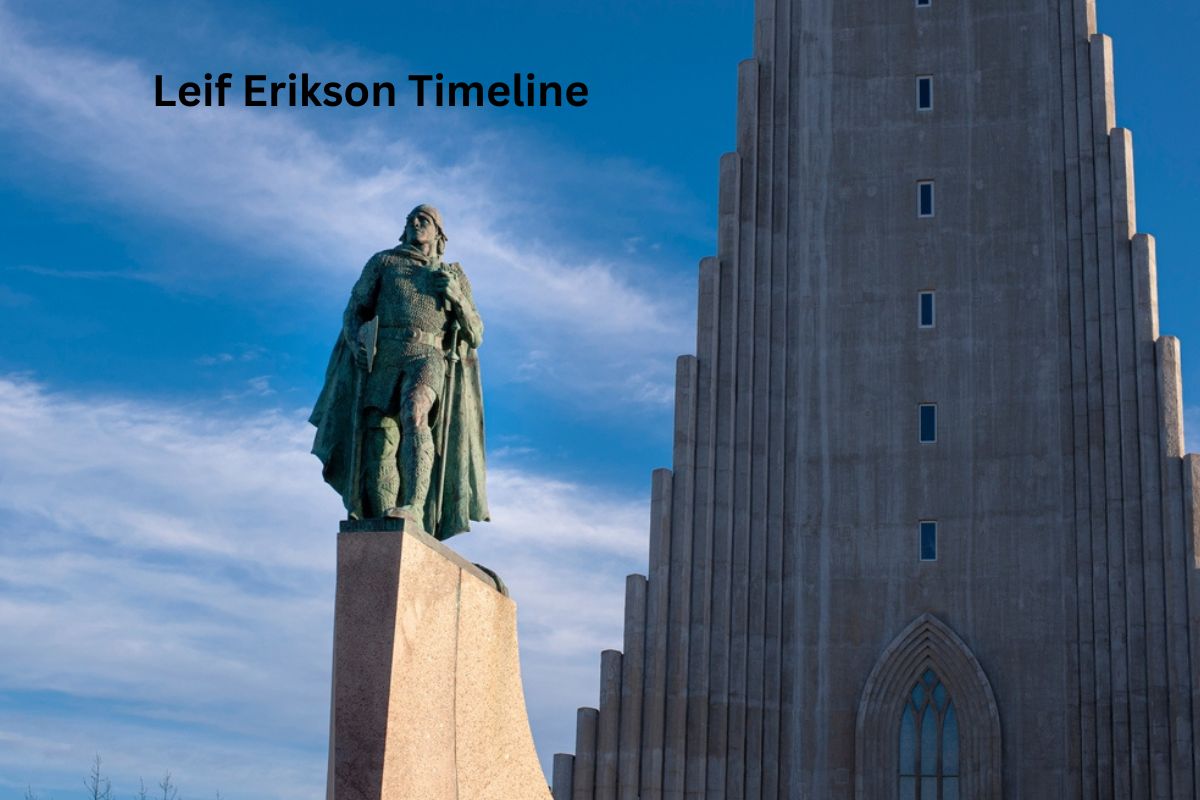Leif Erikson, born around 970, was a Norse explorer and the son of Erik the Red, known for his pioneering voyages to North America, specifically a place he named Vinland, around the year 1000.
He is regarded as one of the earliest Europeans to set foot on North American soil, predating Columbus by several centuries.
Leif Erikson’s exploration played a pivotal role in the history of European exploration of the Americas and continues to be celebrated, with October 9th designated as Leif Erikson Day in the United States to honor his contributions to North American history.
| Event | Date (Approximate) | Description |
|---|---|---|
| Birth | c. 970 | Leif Erikson was born in Iceland. |
| Journey to Greenland | c. 986 | Leif sailed with his father, Erik the Red, to Greenland and helped establish settlements. |
| Voyage to Vinland | c. 1000 | Leif Erikson explored North America, landing in an area he named Vinland (believed to be in Newfoundland, Canada). |
| Return to Greenland | c. 1001 | After his Vinland exploration, Leif returned to Greenland. |
| Conversion to Christianity | 1010s | Leif converted to Christianity, contributing to its spread in Greenland. |
| Death | c. 1020 | Leif Erikson’s exact date and circumstances of death are unclear, but it is believed to have occurred in Greenland. |
| Posthumous Recognition | 19th-20th Century | Recognition of Leif Erikson’s achievements grew in the late 19th century and early 20th century. In 1964, the United States officially recognized October 9th as Leif Erikson Day to commemorate his contributions to North American history. |
Timeline of Leif Erikson
Birth (c. 970)
Leif Erikson was born around the year 970 in Iceland. He was the son of Erik the Red, a well-known Norse explorer and settler. Leif was born into a family with a history of exploration and adventure, which would play a significant role in shaping his own life.
Journey to Greenland (c. 986)
In the late 10th century, Leif Erikson embarked on a journey to Greenland with his father, Erik the Red. Erik had been exiled from Iceland due to his involvement in a dispute that turned violent, leading to the death of several people.
Also Read: Facts About Leif Erikson
As a result, Erik and his family, including Leif, set sail for uncharted lands to the west, ultimately discovering and establishing settlements in what is now known as Greenland.
Leif likely played an active role in these early Greenlandic settlements, participating in the challenges and triumphs of establishing a new home in a rugged and unfamiliar environment.

Voyage to Vinland (c. 1000)
Leif Erikson’s most famous accomplishment was his exploration of North America, specifically an area he named Vinland.
Around the year 1000, Leif and a small group of Norse explorers set sail from Greenland to further explore the lands to the west. They are believed to have landed in what is now Newfoundland, Canada, although the exact location remains a subject of archaeological investigation and debate.
Also Read: Accomplishments of Leif Erikson
Vinland was named for the wild grapes that grew there, and it was likely a seasonal settlement used for exploration, resource gathering, and trading.
Leif’s journey to Vinland is significant in history as it predates Christopher Columbus’s arrival in the Americas by several centuries, making Leif Erikson one of the first known Europeans to set foot in North America.
His exploration paved the way for later Norse expeditions to the region and contributed to the broader understanding of the New World among European explorers.
Return to Greenland (c. 1001)
After Leif Erikson’s exploration of Vinland, he and his crew returned to Greenland. While the Vinland settlement did not become a permanent colony, Leif’s journey opened up opportunities for further exploration and trade between Greenland and the newly discovered lands.
He likely continued to be involved in the affairs of the Greenland settlements and contributed to their development and stability.
Conversion to Christianity (1010s)
Leif Erikson’s conversion to Christianity is an important aspect of his life. Although the exact year of his conversion is not known, it is believed to have occurred during the 1010s, possibly during a visit to Norway.
The spread of Christianity in Norse settlements, including Greenland, was a significant cultural and religious shift.
Leif’s conversion played a role in this transformation, as he and his family adopted the Christian faith. This conversion had a lasting impact on the culture and religious practices of Greenland.

Death (c. 1020)
The details surrounding Leif Erikson’s death are somewhat unclear, and the exact date is not known. However, it is believed that he passed away around the year 1020, most likely in Greenland.
Leif’s death marked the end of an era in Norse exploration, but his legacy as an early European explorer of North America continued to grow in importance over time.
Posthumous Recognition (19th-20th Century)
Leif Erikson’s expeditions and achievements remained relatively obscure for many centuries after his death. It wasn’t until the late 19th century that his story gained wider recognition and appreciation, particularly among people of Scandinavian descent in North America.
In the late 1800s and early 1900s, as interest in Norse history and exploration grew, Leif Erikson was celebrated as a symbol of Nordic exploration and heritage.In 1964, the United States officially recognized October 9th as Leif Erikson Day, a holiday dedicated to commemorating his contributions to North American history.
This recognition further solidified Leif Erikson’s place in the pantheon of early explorers and his role as a pioneer in the European exploration of North America. Today, Leif Erikson’s legacy endures, and he is remembered as a key figure in the history of transatlantic exploration.
